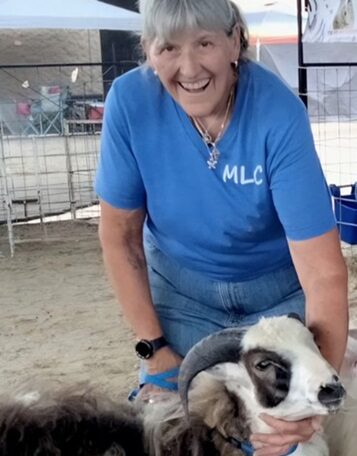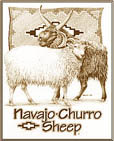Elizabeth Casso Lopez
Flock Size: My flock is small. I have had as many as 15 ewes. At present I have 8 ewes, 2 rams and 15 lambs.
How long have you had sheep: I’ve raised Navajo-Churros for 29 years. I bought my first ram and two ewes in 1995 while living in Utah. During my first few years, I ran both purebreds and some crossbreeds. In 2008, I looked back at the sheep I had, their health, mothering skills, size and temperament. I read everything I could find on the history of the breed and made the trip to Sheep is Life every year I could. I was so inspired by the strength, resilience and intelligence of these animals and by the Navajo Shepherds, I decided the Navajo-Churro was the only breed I wanted to raise. I sold all the cross breeds and started acquiring and breeding sheep the I felt fit the breed standard.
Why is the N-CSA important: The N-CSA is important because it provides a voice for the sheep and their Shepherds. Understanding their history and relationship cemented my desire to do the right thing in my breeding program and care of the animals. The Association is critical in providing excellent information about what to look for and strive for. Providing names and location of other breeders made a big difference in my own history with the sheep. It has been an excellent tool for me to acquire new stock and maintain diversity in my little flock. This is extremely important when we have a breed that is so few in total numbers. We want to maintain the best traits without jeopardizing health through repeated use a small gene pool.
What are some of your ideas for the N-CSA: Development of educational links through multimedia. Good or bad, social media is here to stay so develop an online presence for the Association to increase visibility and interest in the breed. Within this sphere we could create a list of links to mediums, such as YouTube as an example, on uses and how-to’s for the sheep and fiber. There are also some wonderful videos of elders telling stories about their lives and the history of the sheep as they have been told that could possibly be linked.
Support the sheep and Native shepherds through the drought and other hardships. Ensure that we keep up the numbers of sheep and genetic diversity to replenish the native flocks when the weather and feed improves. Have honest communication about what is important for their culture and range and hear what other native partners want and need.

